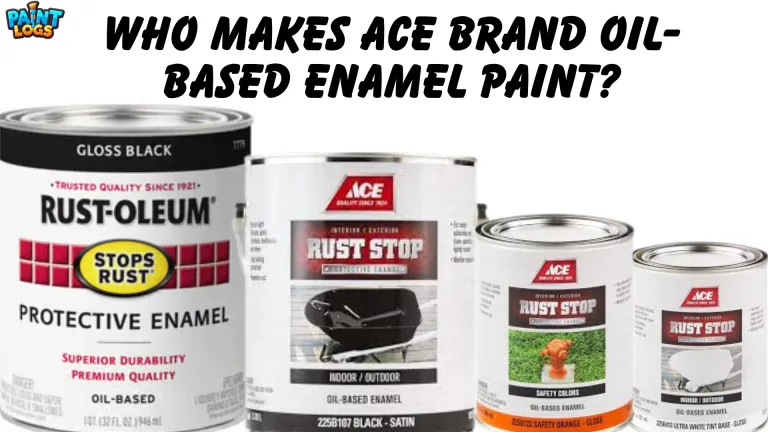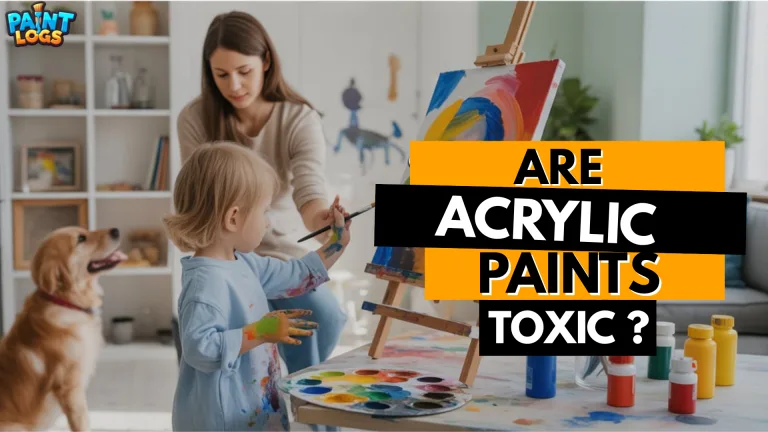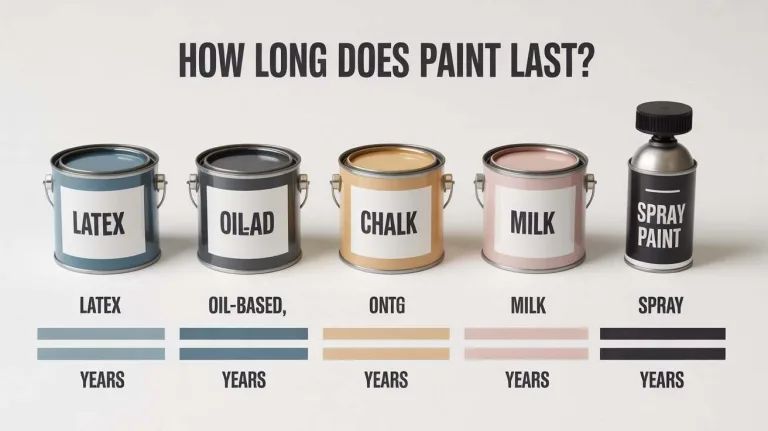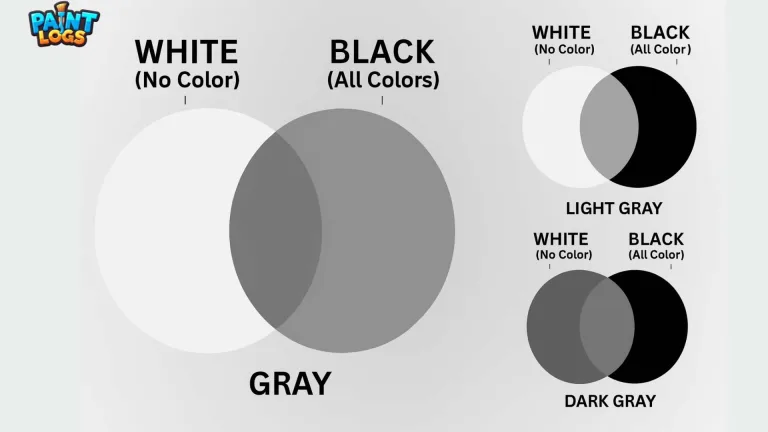Learning how to read labels on acrylic paint and oil paint tubes is one of the easiest ways to instantly improve your artwork. Each tube or jar includes essential information—if you know what to look for. Labels show the pigment number for color consistency, lightfastness ratings to track fade resistance, and opacity symbols so you can layer with confidence. The series number reveals the paint’s pricing tier and sometimes its pigment concentration.
Once you understand these labels, you stop guessing and start painting with intention. Whether you’re blending acrylics or building rich oil layers, reading paint labels helps you choose better paint, mix smarter, and create artwork that lasts.
In this guide, you’ll learn exactly how to decode labels on acrylic and oil paint tubes so you can shop, mix, and paint with confidence in your next masterpiece.
Labels on Acrylic Paint and Oil Paint Tubes
Before diving into labels, let’s explore the essential components (lables) of paint and paint tubes and how they impact performance:
1. Pigments
Pigments are finely ground particles that provide paint with its color. They are typically natural or synthetic. The labels on both acrylic and oil paints usually list the pigment’s chemical composition or pigment number, such as PB29 for Ultramarine Blue or PW6 for Titanium White.
- Organic Pigments: These are derived from natural sources and are known for their vibrant, bright colors. However, they may fade over time when exposed to light.
- Inorganic Pigments: These are more stable and durable but may appear less vivid. Inorganic pigments include earth tones like Burnt Sienna and Yellow Ochre.
2. Binders
Binders hold the pigment particles together and allow the paint to adhere to the painting surface.
- Oil Paints: Use natural oils like linseed, poppy seed, or safflower oil. These oils provide a glossy finish but slow down the drying process.
- Acrylic Paints: Use synthetic binders made from acrylic polymers, creating a fast-drying, water-resistant finish when dry.
3. Solvents and Mediums
Solvents and mediums modify the paint’s consistency, drying time, and texture.
- Oil Paints: Use solvents like turpentine or mineral spirits for thinning and cleaning brushes. Artists can add oil-based mediums like linseed oil to increase gloss and transparency.
- Acrylic Paints: Water acts as a solvent, but special acrylic mediums adjust flow, thickness, and drying speed.
4. Additives
Additives improve paint performance by enhancing flow, reducing drying time, or stabilizing consistency. Common additives include:
- Acrylic Paints: Retarders slow drying; stabilizers maintain smoothness.
- Oil Paints: Driers like cobalt help speed up drying.
5. Fillers
Fillers increase the paint’s volume without affecting its color. These are more common in student-grade paints, making them more affordable but less pigmented. Fillers impact the paint’s texture, coverage, and overall quality.
| Component | Definition | Role in Paint | Example |
| Pigments | Finely ground particles giving paint color | Provide color and opacity | PB29 (Ultramarine Blue) |
| Binders | Material holding pigment together | Adheres paint to the surface | Acrylic Polymer (Acrylic) |
| Solvents | Liquids thinning paint | Adjust paint flow and drying | Turpentine (Oil), Water (Acrylic) |
| Additives | Chemicals enhancing paint performance | Control drying, flow, texture | Retarders, Driers |
| Fillers | Neutral material increasing paint volume | Adjust thickness, reduce cost | Chalk, Clay |
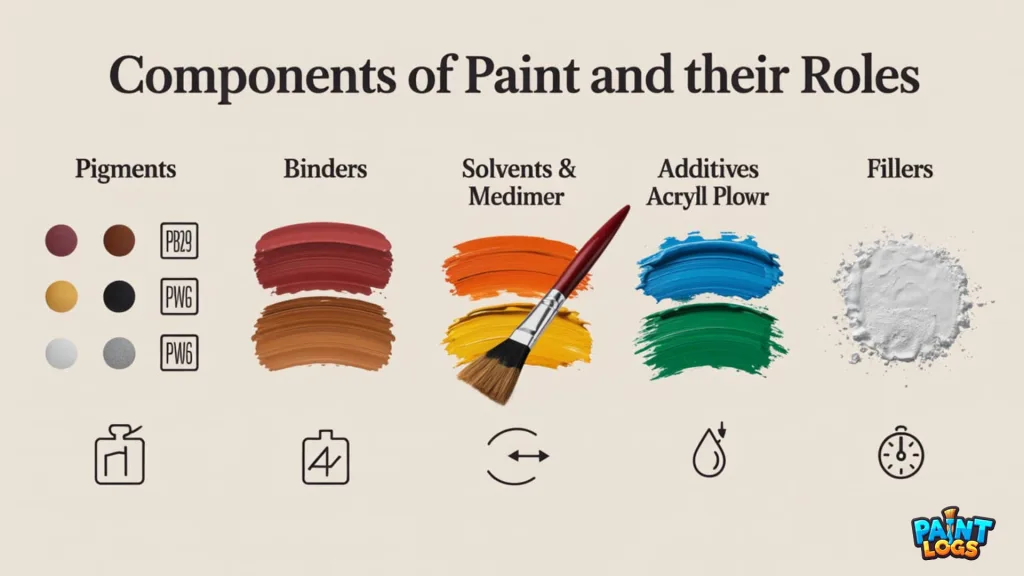
Understanding and How to Read Labels on Acrylic Paint and Oil Paint Tubes
The labels on paint tubes provide vital information about the paint’s quality, durability, and how it will behave on your canvas. Here’s a breakdown of common label elements:
1. Paint Type and Brand
The first thing you’ll notice is the paint type (Acrylic or Oil) and the brand name. Choosing a reputable brand ensures higher-quality pigments and better performance. Popular brands include:
- Acrylic Paints: Golden, Liquitex, Winsor & Newton
- Oil Paints: Winsor & Newton, Gamblin, Old Holland
2. Series or Grade
The series or grade indicates the paint’s quality and price. It’s determined by the pigments’ cost and concentration.
Paints are often labeled by series, indicating price and pigment quality.
| Series | Description | Example Colors |
| Series 1 | Most affordable; basic pigments | Titanium White, Ultramarine Blue |
| Series 2-4 | Expensive; premium pigments | Cadmium Red, Cobalt Blue |
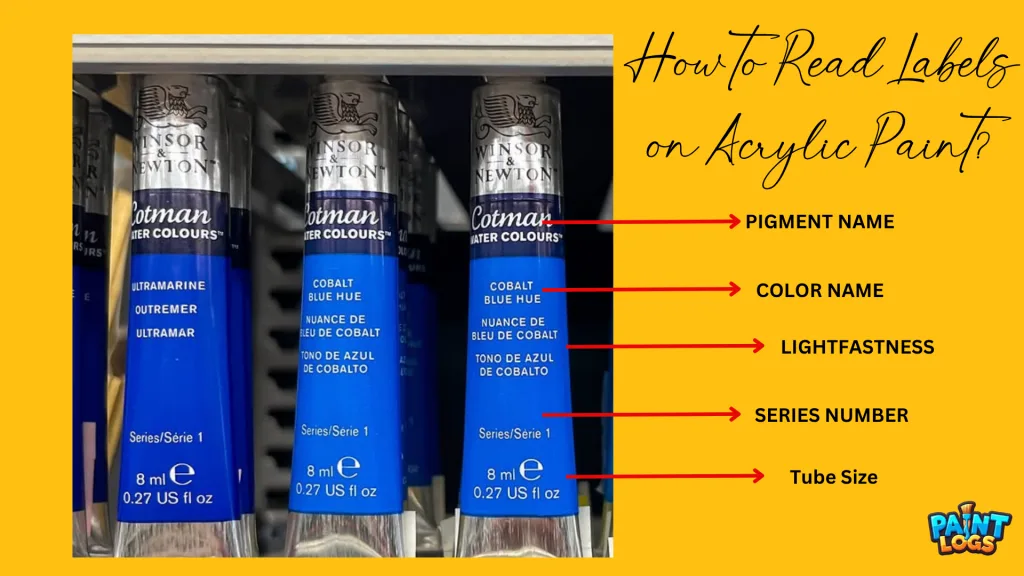
3. Pigment Information
This section lists the specific pigments used in the paint. Labels show their chemical codes.
Pigment labels use standard codes for easier identification.
| Pigment Code | Color Name | Description |
| PW6 | Titanium White | Bright, opaque white pigment |
| PB29 | Ultramarine Blue | Deep, vibrant blue |
| PR108 | Cadmium Red | Strong, warm red pigment |
Artists can mix pigments more accurately when familiar with these codes.
4. Opacity Indicator
Opacity indicates how well the paint covers a surface. Paint tubes often display:
| Symbol/Letter | Opacity Type | Meaning |
| ■ (Solid) | Opaque | Fully covers underlying layers |
| □ (Empty) | Transparent | Allows lower layers to show |
| ◧ (Half-filled) | Semi-opaque | Partial coverage |
| O / ST / T | O = Opaque, T = Transparent | Label variations in some brands |
Labels may also use letters:
- O: Opaque
- ST: Semi-transparent
- T: Transparent
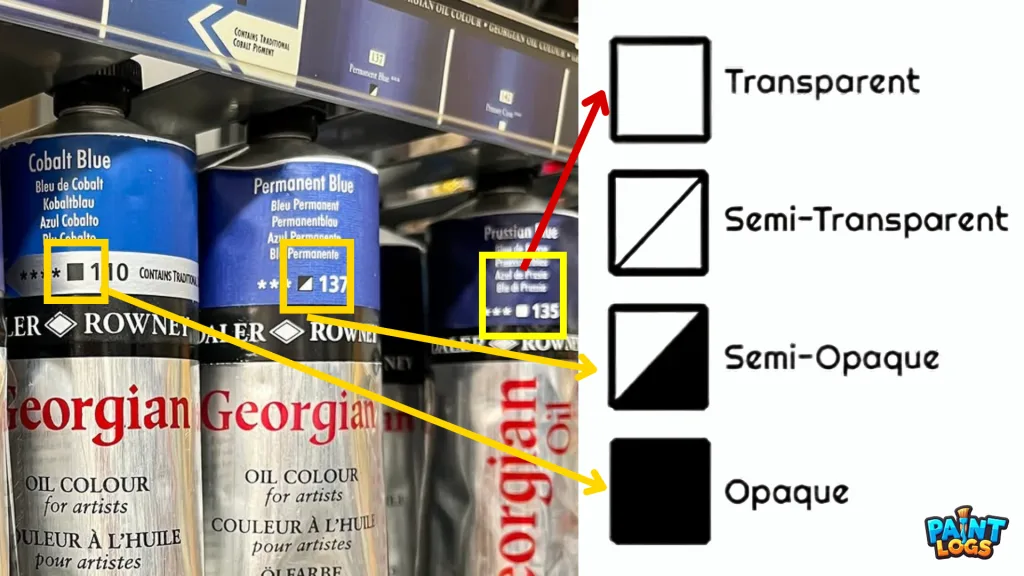
5. Color Code or Number
Each paint color has a unique code, making it easier to reorder or find matching shades. For example, 507 might represent Cobalt Blue in a specific brand.
6. Vehicle/Binder Information
This indicates the binder used in the paint:
| Paint Type | Binder/Vehicle | Characteristics |
| Oil Paint | Linseed/Safflower Oil | Glossy, slow drying |
| Acrylic Paint | Acrylic Polymer | Fast drying, water-resistant |
7. Drying Time
For oil paints, drying time varies based on the oil type and added driers. Labels might mention fast-drying or slow-drying features.
Drying time indicates how long the paint takes to dry.
| Label | Drying Time | Example |
| Fast-Drying | 24-48 hours | Alkyd-based oil paints |
| Slow-Drying | Days to weeks | Traditional oil paints |
8. Safety Labels
Safety labels indicate toxicity levels and whether the paint meets ASTM (American Society for Testing and Materials) standards. Common labels include:
- AP: Non-toxic, safe for educational use.
- CL: Caution Label – may be hazardous.
Safety labels warn about toxicity and standards compliance.
| Symbol | Meaning | Description |
| AP | Approved Product | Non-toxic, safe for all users |
| CL | Caution Label | May contain hazardous materials |
| ASTM | ASTM Certification | Meets safety and quality standards |
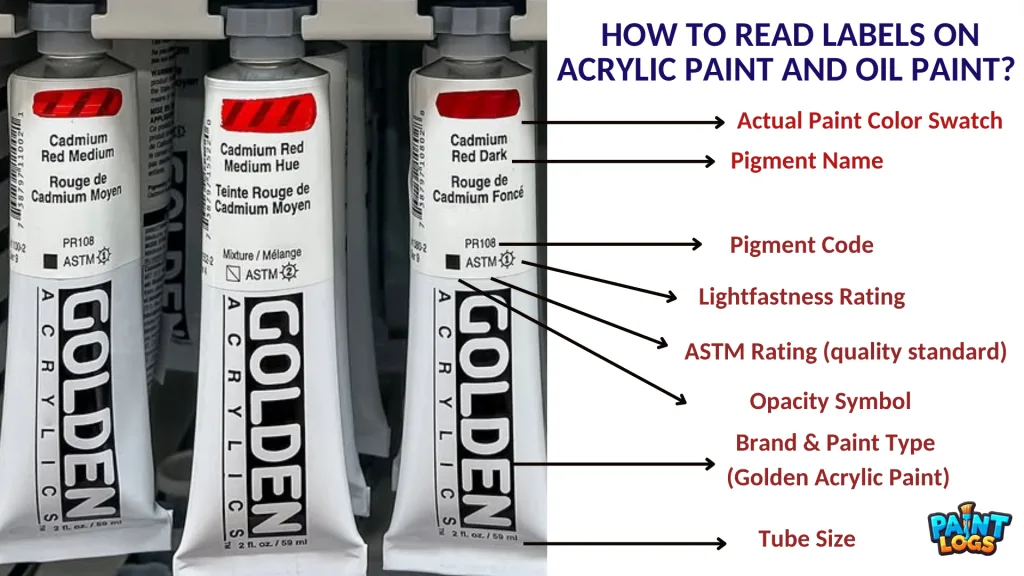
Additional Labels on Acrylic Paint and Oil Paint Tubes
Acrylic paints may have extra labels indicating their finish, viscosity, and body type.
| Label | Description | Best For |
| Matte Finish | No shine, flat appearance | Muted, soft effects |
| Satin Finish | Soft, subtle shine | Balanced visual appeal |
| Gloss Finish | High shine | Bold, reflective finishes |
| Heavy Body Acrylic | Thick, holds texture | Impasto, brushstroke effects |
| Soft Body Acrylic | Smooth, creamy | General painting, blending |
| Fluid Acrylic | Thin, flowy | Fine details, glazing |
| High Flow Acrylic | Ink-like, very fluid | Airbrushing, calligraphy |
1. Finish Type
The paint’s finish when dry can be:
- Matte: No shine, flat appearance.
- Satin: Soft shine.
- Gloss: High shine.
2. Body Type
The body type refers to the paint’s viscosity:
- Heavy Body: Thick and buttery, retaining brushstrokes. Great for impasto.
- Soft Body: Smooth and creamy, perfect for blending.
- Fluid: Thin and spreadable, ideal for glazing or fine details.
- High Flow: Ink-like consistency for airbrushing and line work.
Other Labels on Oil Paint Tubes
Oil paints may include additional details related to oil type, drying time, and consistency.
| Label | Meaning | Description |
| Drying Time | Fast-drying or Slow-drying | Affects project timeline |
| Oil Content | Type of oil used | Linseed oil (glossy), safflower oil (matte) |
| Consistency | Paint thickness/texture | Buttery (thick) or smooth (thin) |
1. Drying Time
Some oil paints dry faster due to additives like alkyd resins. A “Fast-Drying” label means the paint might dry within 24 hours, unlike traditional oil paints, which can take days or weeks.
2. Oil Content
Occasionally, paint tubes list the type of oil used, such as linseed, walnut, or safflower oil. Linseed oil dries faster and provides a strong, glossy finish, while safflower oil offers a slower-drying matte finish.
3. Consistency
Labels may describe the paint’s consistency, ranging from thick and buttery to smooth and fluid. This helps determine how the paint behaves on the canvas.
Conclusion
Now you know how to read labels on acrylic paint and oil paint tubes easily. Understanding pigment numbers, lightfastness, opacity, and series helps you pick the right paint, mix colors better, and create artwork that lasts. Take a moment to check labels before buying, so you can paint with confidence and intention every time.
FAQs
1. What does “opaque” mean on a paint label?
“Opaque” refers to how well the paint covers a surface. If a paint is labeled as opaque, it means it fully covers the underlying surface or previous layers of paint without allowing them to show through.
2. How can I tell if a paint is high-quality from the label?
Look for details such as the pigment code, series number, and the presence of premium pigments like Cadmium Red or Cobalt Blue. Higher-quality paints usually have fewer fillers and are priced in higher series numbers (like Series 3 or 4).
3. What is the difference between “heavy body” and “soft body” acrylic paint?
“Heavy body” acrylic paint is thick, retains texture, and is ideal for impasto or thick brushstrokes. “Soft body” acrylic is smoother and creamier, perfect for blending and general painting techniques.
4. Why do some oil paints have a “fast-drying” label?
Some oil paints are made with additives like alkyd resins, which speed up the drying time. These are ideal if you want to complete a painting in a shorter period, whereas traditional oil paints take longer to dry.
5. How do I know if a paint is toxic?
Look for safety labels like “AP” (Approved Product), which means the paint is non-toxic and safe for all users. Alternatively, “CL” (Caution Label) indicates that the paint may contain hazardous materials.
6. What does “ASTM” on the paint label indicate?
ASTM stands for the American Society for Testing and Materials. If a paint tube has the ASTM label, it means the paint meets certain quality and safety standards.
7. How can I tell if a paint is acrylic or oil just by looking at the label?
The paint type is usually listed at the top of the label, with clear indications like “acrylic” or “oil paint.” Acrylic paints often also mention being water-soluble, while oil paints will list oil-based binders like linseed or safflower oil.



